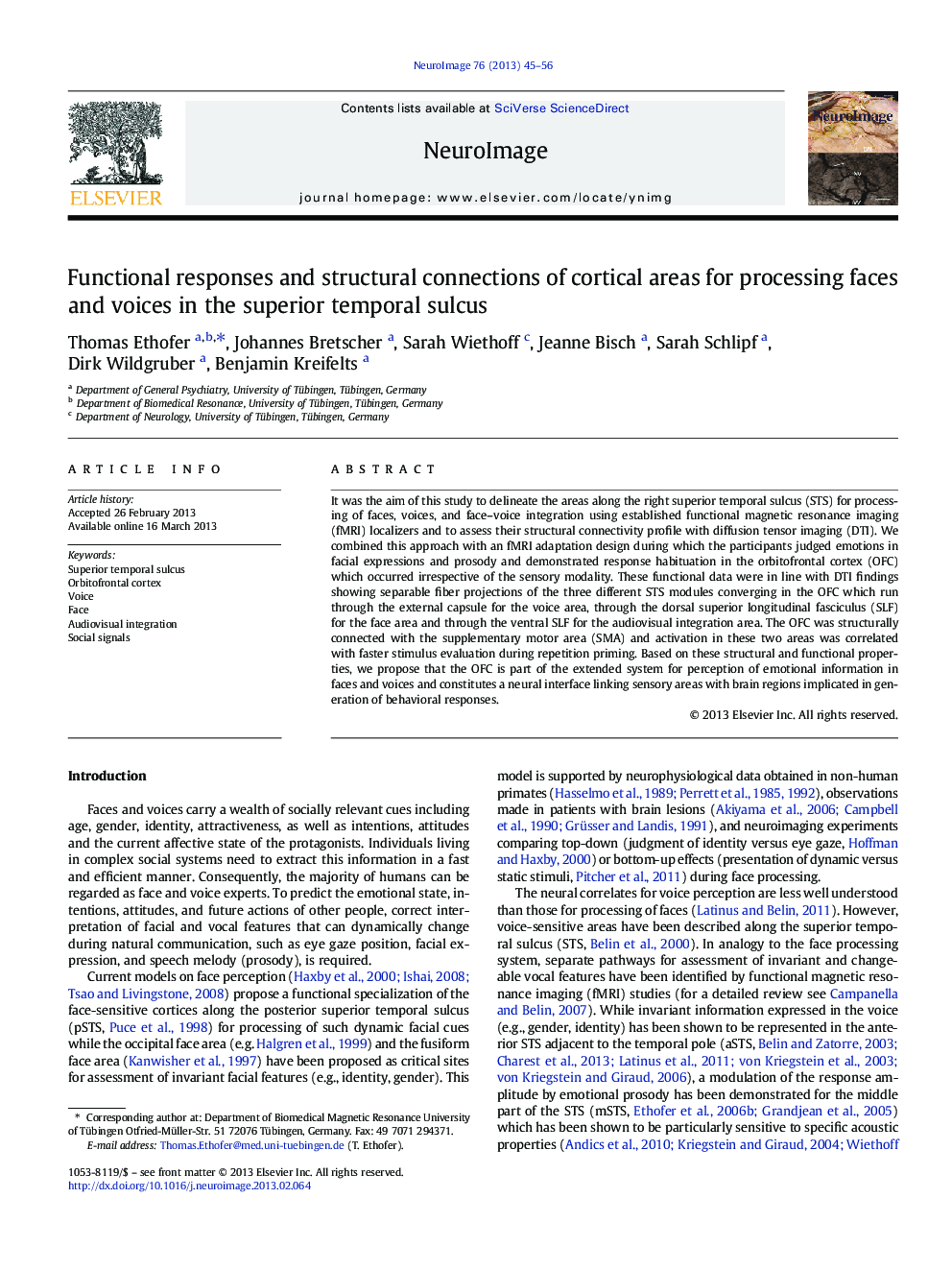| Article ID | Journal | Published Year | Pages | File Type |
|---|---|---|---|---|
| 6029385 | NeuroImage | 2013 | 12 Pages |
â¢Voice, face, and audiovisual integration areas project to the OFC.â¢Response habituation in the OFC occurs irrespective of sensory modality.â¢OFC links sensory cortices with areas concerned with behavioral responses.
It was the aim of this study to delineate the areas along the right superior temporal sulcus (STS) for processing of faces, voices, and face-voice integration using established functional magnetic resonance imaging (fMRI) localizers and to assess their structural connectivity profile with diffusion tensor imaging (DTI). We combined this approach with an fMRI adaptation design during which the participants judged emotions in facial expressions and prosody and demonstrated response habituation in the orbitofrontal cortex (OFC) which occurred irrespective of the sensory modality. These functional data were in line with DTI findings showing separable fiber projections of the three different STS modules converging in the OFC which run through the external capsule for the voice area, through the dorsal superior longitudinal fasciculus (SLF) for the face area and through the ventral SLF for the audiovisual integration area. The OFC was structurally connected with the supplementary motor area (SMA) and activation in these two areas was correlated with faster stimulus evaluation during repetition priming. Based on these structural and functional properties, we propose that the OFC is part of the extended system for perception of emotional information in faces and voices and constitutes a neural interface linking sensory areas with brain regions implicated in generation of behavioral responses.
